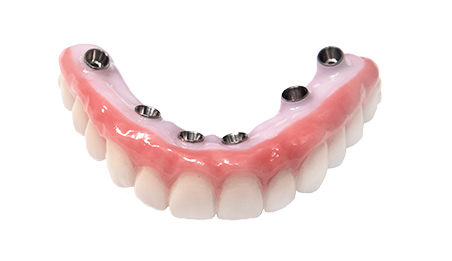Dental Sense Fundamentals Explained
Table of Contents6 Easy Facts About Dental Sense ExplainedThe Only Guide to Dental Sense4 Easy Facts About Dental Sense Described5 Simple Techniques For Dental Sense
are medical gadgets surgically dental implanted right into the jaw to recover an individual's capability to chew or their look. They provide assistance for fabricated (phony) teeth, such as crowns, bridges, or dentures. When a tooth is lost as a result of injury or illness, a person can experience complications such as fast bone loss, faulty speech, or changes to eating patterns that lead to discomfort.Dental implant systems contain a dental implant body and oral implant joint and might likewise include an abutment addiction screw. Dental veneers cost. The oral implant body is surgically placed in the jawbone in place of the tooth's origin. The dental implant joint is normally connected to the implant body by the joint fixation screw and extends with periodontals right into the mouth to sustain the connected man-made teeth
(https://www.easel.ly/browserEasel/14548839)Framework of The Dental Implant System choosing dental implants, talk with your dental copyright regarding the possible advantages and dangers, and whether you are a prospect for the procedure. Things to consider: Your total wellness is an important variable in identifying whether you are a great prospect for dental implants, the length of time it will certainly require to heal, and how much time the implant may stay in place.
Smoking cigarettes might influence the recovery process and reduce the long-term success of the implant. The recovery procedure for the implant body might take a number of months or longer, during which time you normally have a temporary joint in place of the tooth. the oral implant treatment: Very carefully comply with the dental health guidelines provided to you by your oral service provider.
Our Dental Sense Statements
Implant failing can lead to the need for one more operation to deal with or replace the dental implant system. Brings back the ability to chew Restores aesthetic look Helps maintain the jawbone from diminishing due to bone loss Preserves the health and wellness of the surrounding bone and periodontals Helps maintain surrounding (close-by) teeth steady Boosts quality of life Damage to bordering all-natural teeth throughout dental implant positioning Injury to the surrounding tissues throughout surgical procedure, such as sinus perforation Injury throughout surgery (for instance, fracture of bordering jawbone) Poor feature, such as seeming like the teeth do not bite together generally A feeling that the tooth hangs or turning in place resulting from a joint screw loosening up Implant body failing (looseness of the dental implant body) as a result of systemic infection, which may be most likely in people with uncontrolled diabetes because of regional infection in bone and gums sustaining the dental implant body due to delayed healing, which might be a lot more likely in clients that smoke Trouble cleansing the periodontals around the dental implant, causing inadequate oral health Untreated periodontal condition Post-surgical numbness as a result of nerve impingement or damage Always notify healthcare carriers and imaging professionals that you have dental implants prior to any kind of magnetic resonance imaging (MRI) or x-ray treatments.
FDA is not knowledgeable about any type of unfavorable occasions reported for MRI or x-ray treatments with oral implants. Oral implants systems are typically constructed from materials that adhere to worldwide consensus criteria of the International Company for Standardization (ISO) or ASTM International. These requirements have information of what makes a secure material.

An oral implant is a structure that changes a missing out on tooth. With screw-like devices, the surgeon inserts a dental implant into the jawbone, and it works as a support for an artificial tooth, called a crown. A device called a joint links the man-made tooth to the dental implant. The crown is customized to fit the person's mouth and match the shade of their teeth.
Not known Facts About Dental Sense
Some individuals are not eligible for oral implant surgery. It is for dental cosmetic surgeons to operate individuals with: severe illnessuncontrollable metabolic diseasebone or soft tissue illness or infectionIf these concerns are solved, an individual can have the surgical procedure. In, dental surgeons abstain from running on individuals with: If people with any of the above go through oral implant surgical procedure, there is a greater risk of the implant stopping working.

Oral dental implant surgical treatment is a customized process. Give you time to heal. Connect the post and final crown, bridge or denture.
Next, your cosmetic surgeon will meticulously place the oral implant into your jaw. If your implant is near the front of your mouth, your dental professional will make a short-lived tooth for you to put on until you heal.
Dental Sense for Beginners
During the healing phase, your jawbone must fuse to the dental implant. This procedure can take anywhere from 3 to 9 months.
When your implant heals, your dentist can attach the abutment (tiny connector blog post) and your last restoration (crown, bridge or denture). This typically takes about one hour to finish and might call for a 2nd minor surgery. You should not feel any kind of discomfort during your dental implant treatment since your company will certainly make use of drug to numb your gum tissues.